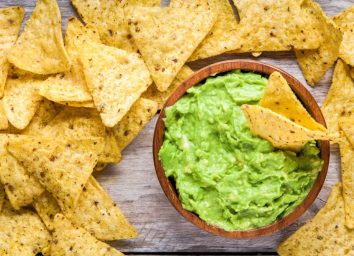25 Foods People Over 45 Should Eat
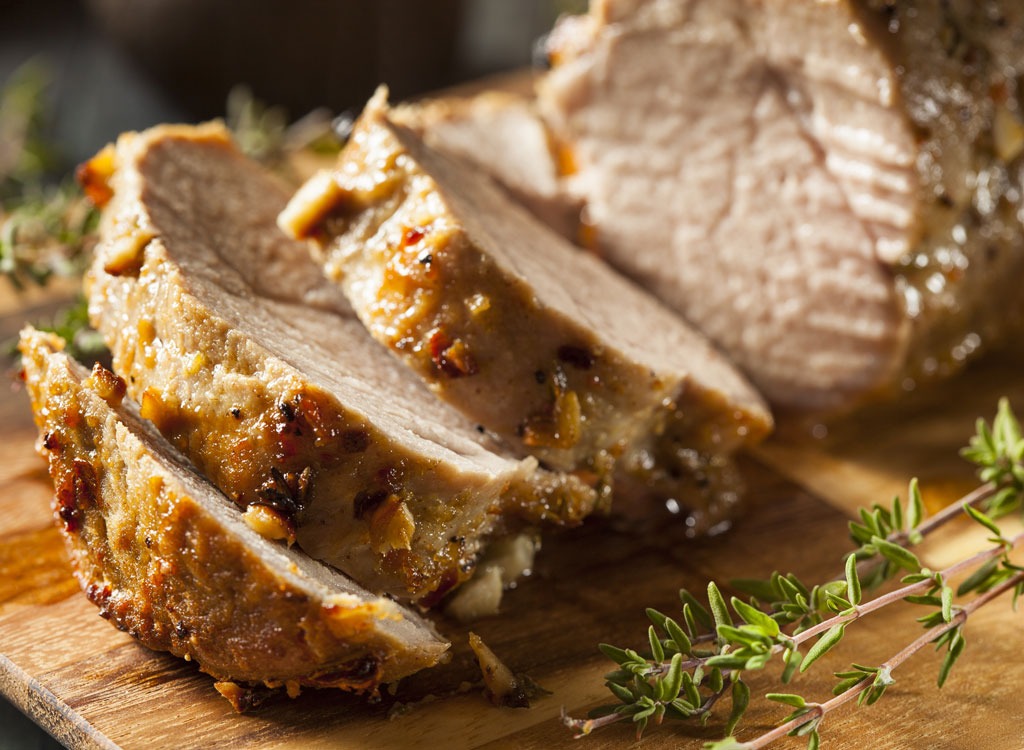
Turning 45 isn’t what it used to be. Nowadays you could be halfway to 90 and still be a hipster icon like Jared Leto or Sophia Coppola, have shredded abs like Justin Theroux or Mark Wahlberg, or crack up the cool kids like Amy Poehler or Keegan-Michael Key. Each of these stars was born 45 years ago, but none of them strike us as anything close to “middle-aged.”
And there’s a good reason why: When you take care of your body by eating right, you prevent age-related weight gain—the number-one way to pump the breaks on the passage of time. And it’s not just about how you look; when you slow the aging process, you expand your future opportunities. In fact, a University of Florida study found that for women, gaining an additional 25 pounds—about what the average person gains between the ages of 20 and 45—results in a salary that’s $15,572 lower than those who keep their weight steady.
Plus, eating right now will prevent all the other tell-tale signs of aging, from doctor visits to senior moments. And while we recommend all 25 of these foods, some may be more game-changing for you than others. When food journalist Kelly Choi’s mother—a former nurse in Korea who knew the vast benefits of tea—was diagnosed with diabetes, she asked her daughter for help with developing a tea-focused cleanse. Choi stepped up and authored The 7-Day Flat-Belly Tea Cleanse, which not only helped her mom lose weight, but also brought her blood sugar under control. “My mom knew sip on this super drink, but a lot of people are still missing out,” Choi says. “If you’re over 45, you should definitely more of these foods and drinks like green tea into your daily routine.”
To keep your health, and your hipster cred, intact, the editors of Eat This, Not That! have identified tea and 24 more foods that are on the kitchen table of nearly every lean, fit, healthy 45+ star, and should be making an appearance on your daily menu, too. And once you see how easy it is to eat your way to a longer life, be sure to avoid these 20 Foods That Age You 20 Years!
BECAUSE THEY LOWER CHOLESTEROL…

“As women and men get older, their cholesterol levels rise—it’s just a natural part of the aging process. Partly due to hormonal changes and partly due to a decrease in lean body mass and a subsequent increase of fat mass” explains Sarah Koszyk, MA, RDN, dietitian and co-author of Brain Food: 10 Simple Foods That Will Increase Your Focus, Improve your Memory, and Decrease Depression. “Before menopause, women have lower total cholesterol levels than men of the same age. However, after the age of menopause, women’s LDL levels tend to rise,” she adds. To keep your “bad” LDL cholesterol levels in check and ward off clogged arteries, steer clear of partially hydrogenated oils (also known as “trans fats”), and reduce your overall sugar intake, since sugar has been recently linked to high cholesterol. Another smart move? Add more of the cholesterol-lowering foods below to your diet plan.
Wild Salmon
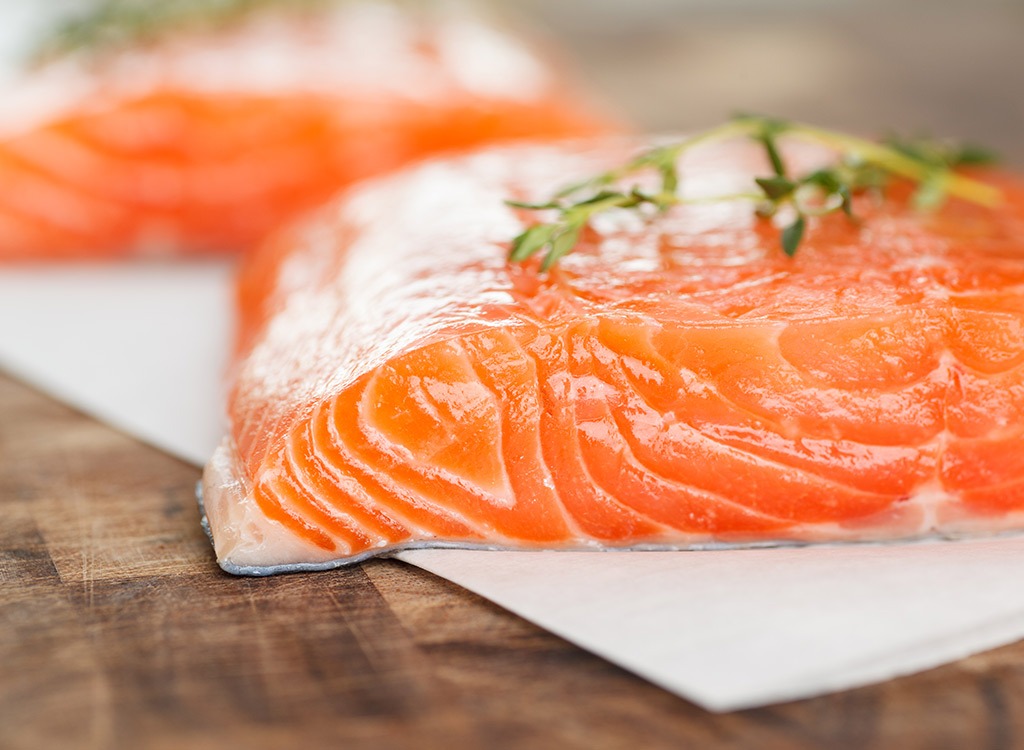
Fatty fish like wild salmon contain omega-3 fatty acids that help reduce inflammation, slow the plaque buildup inside blood vessels and increase the ratio of good to bad cholesterol levels, explains Koszyk. “They’ve also been shown to lower blood pressure, ddiecreasing the odds of stroke and heart failure.” Wondering how much to eat? An analysis of 20 studies published in the journal JAMA indicates that eating one to two 3-ounce servings of fatty fish a week reduces the risk of dying from heart disease by an impressive 36 percent! If you’re already suffering from heart disease Koszyk recommends upping your intake to three 4-ounce servings throughout the week. “In addition to the fish, taking three 1000 mg omega-3 vitamins containing EPA and DHA daily is recommended for those with heart disease. Don’t take them all at once, though. Take one in the morning, one at lunch, and one in the evening.” And be sure to bookmark, pin, print, and save our in-depth, exclusive report on 40+ Popular Types of Fish—Ranked for Nutrition.
Avocado
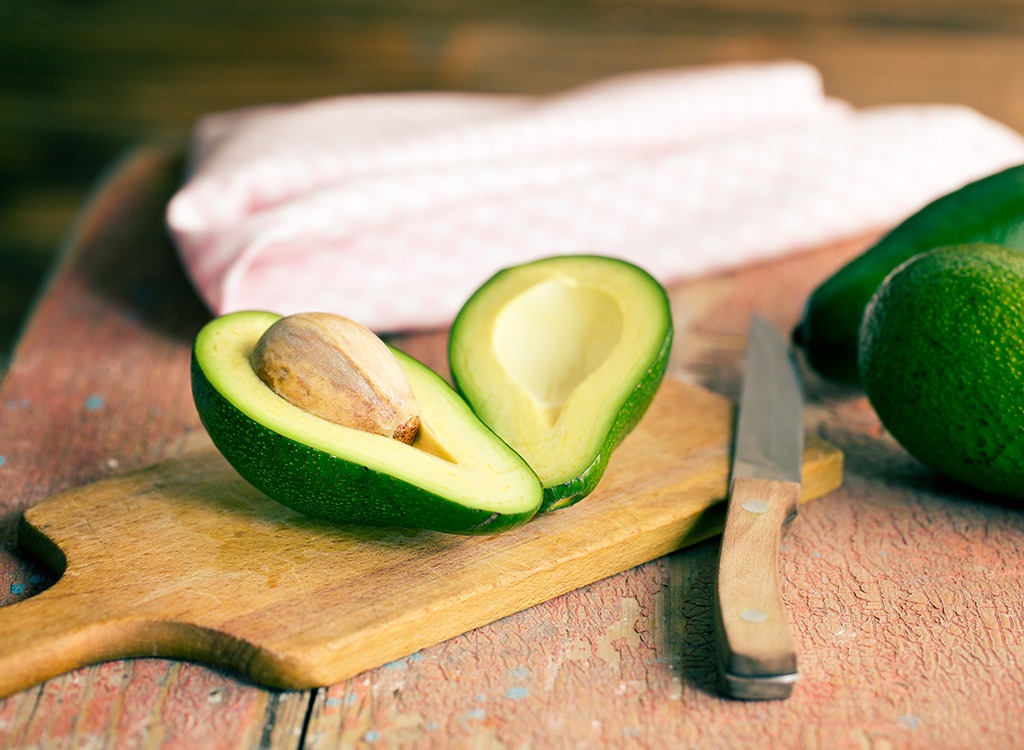
Thanks to their mono and polyunsaturated fats, avocados can help lower cholesterol levels and decrease risk for heart disease when consumed in place of saturated or trans-fats. Just don’t overload your plate with the stuff. One medium fruit (yes, avocado is a fruit) packs 227 calories—so don’t eat more than half in one sitting. Keep the pit in the uneaten portion, squeeze on some lemon juice and then firmly wrap it with plastic wrap. This will keep it fresh and green until you’re ready to eat the rest. To discover more fatty foods that will make you skinny, check out these 20 Best Full-Fat Foods for Weight Loss.
Green Tea
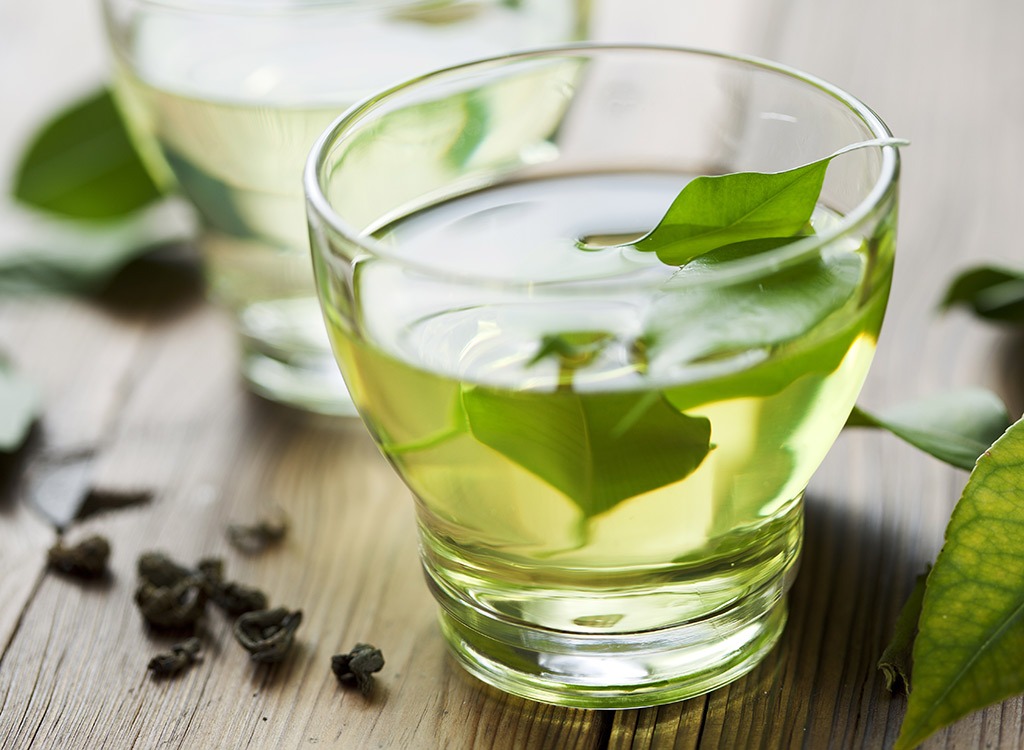
Not only can green tea aid weight loss and help you recover faster after a workout, its potent antioxidants may also lower levels of “bad” cholesterol levels, while simultaniously increasing levels of “good” cholesterol levels, according to Harvard researchers. How does it work? “Studies indicate that the polyphenols in green tea may block cholesterol from being absorbed in the intestine and also help the body get rid of cholesterol,” explains registered dietitian Isabel Smith. Make the most of the benefits from tea with The 7-Day Flat-Belly Tea Cleanse! (Test panelists lost up to 10 pounds in one week!)
Chia Seeds
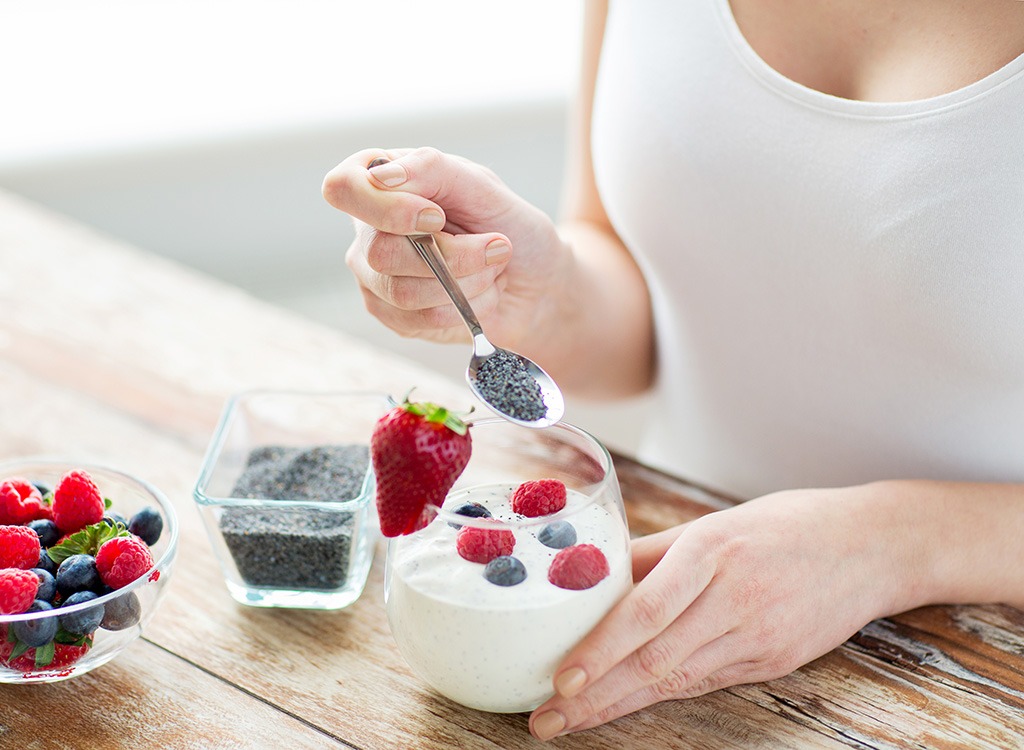
Fish and nuts are most widely cited for their omega-3 content, with salmon as the unofficial poster child of the nutrient. But there are a number of surprising sources that can help you meet your daily dose, which is 600 to 1,100 milligrams, according to The Institute of Medicine. One of our favorites: chia seeds! Just two tablespoons of the stuff serve up a whopping 4,500 milligrams. It’s also one of the best sources of dietary fiber in the world, packing 11 grams in a 2 tablespoon serving, which is particularly good news for your waistline. For every 10-gram increase in fiber eaten per day, belly fat reduced by 3.7 percent over five years, a recent study found. Not only can a flatter stomach give you that buff, Mark Wahlberg physique you crave, but it can benefit your heart and lifespan, too. To reap the benefits, add the small but powerful seeds to your oats, smoothies or Greek yogurt—or better yet, make one of these tasty chia pudding recipes!
Oatmeal
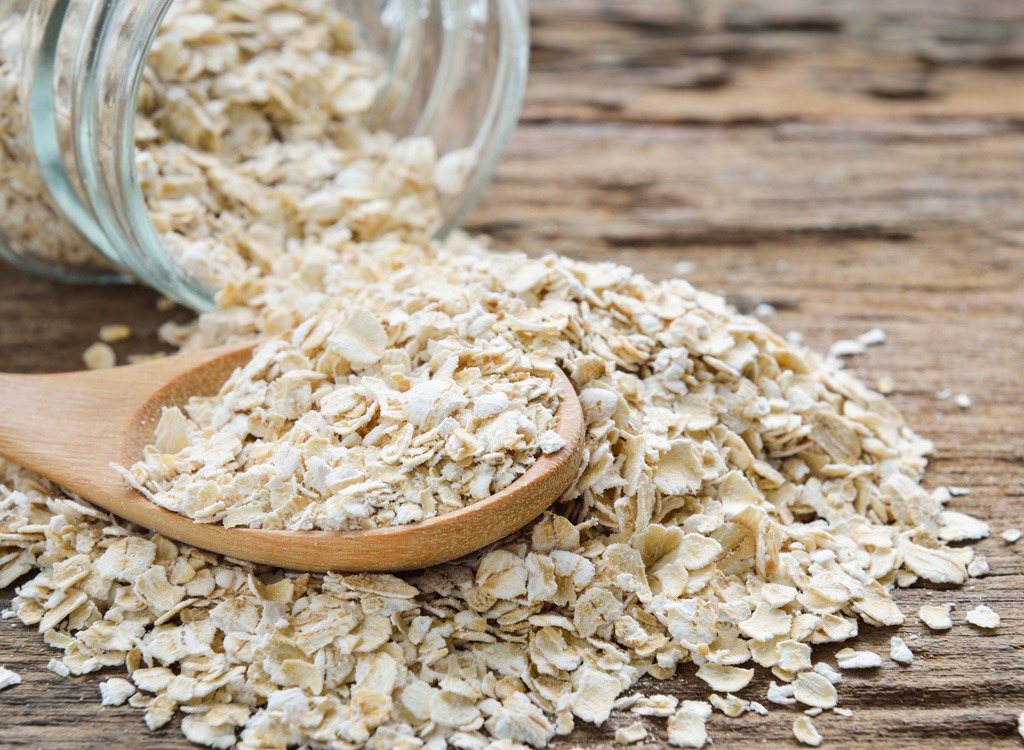
Good news, oatmeal lovers, you’re go-to morning meal is one of the best foods you can eat after you celebrate the big 4-5. “Research suggests that the soluble fiber in oats helps lower ‘bad’ LDL cholesterol levels. Soluble fiber is thought to stick to cholesterol and prevent it from being absorbed in the body,” explains Koszyk. “If you have high cholesterol, you may want to consider eating oats daily. Mix a cup of cooked oatmeal with 8 chopped walnut halves (another tasty cholesterol-lowering food), 1 tablespoon of chia seeds, and 1 cup of blueberries for a meal that’s a powerhouse of heart health. You can also add oats to your smoothies for a thicker, heartier drink.
BECAUSE THEY KEEP YOUR MIND SHARP…

Carrying excess belly fat doesn’t just make your pants feel tight and strain your knees, it burdens your brain as well. In fact, research indicates that midlife obesity is a risk factor for dementia later in life. What’s the belly-brain connection? Just as the fat in your midsection causes plaque to clog the arteries feeding blood to your heart, so, too, does it clog up the arteries around the brain—a contributing factor in the development of Alzheimer’s. To protect your brain and ensure you’ll remember all of your kid’s names well after you’ve become a grandparent, stock up on these delicious eats that have been shown to shrink your waist and bolster your brainpower.
BLUEBERRIES & STRAWBERRIES
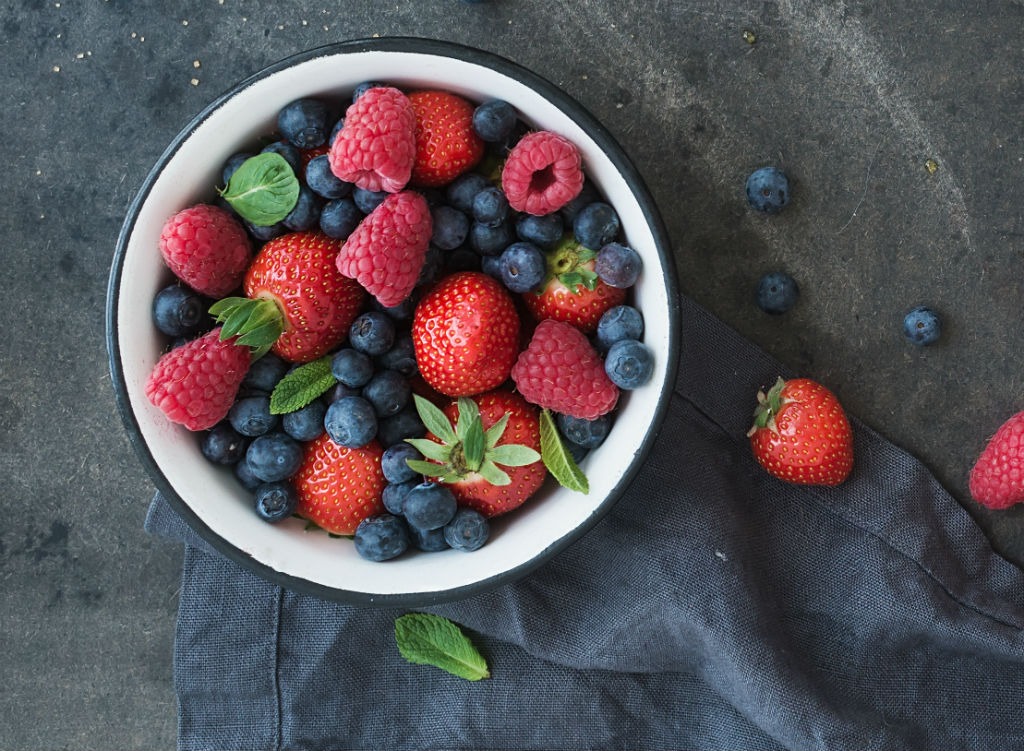
They’re sweet, they’re juicy and they make perfect additions to salads, oats, and smoothies. But better yet, berries are amazing brain food and potent sources of fiber, a nutrient shown to aid weight loss. (For even more foods that will shrink your belly, check out these 30 Foods That Melt Love Handles.) According to an Annals of Neurology report, consuming a diet rich in blueberries and strawberries may help slow mental decline and help maintain memory and focus into your golden years. Strawberries are also rich in folate, a nutrient that when consumed with B vitamins have been shown to prevent cognitive decline and dementia.
Olive Oil
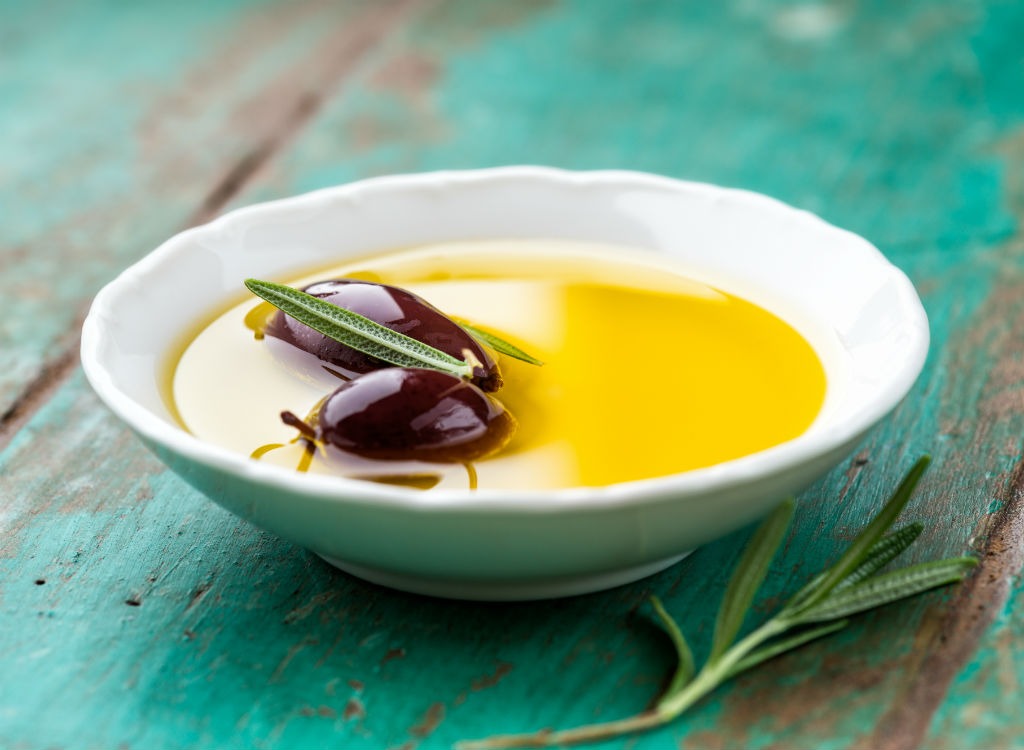
Olive oil is rich in cancer-fighting polyphenols and monounsaturated fats that boost heart health, slow brain aging and reverse age-related memory deficits, explains Koszyk. A diet rich in the Mediterranean staple has also been shown to increase levels adiponectin, a hormone responsible for breaking down fats in the body. (The more someone has, the lower their BMI tends to be.) Reap the benefits by making olive oil your go-to cooking fat and using it in dressings and sauces. But remember: “Oil is a fat and we still have to be cautious of our overall daily caloric consumption to prevent weight gain.” Consume no more than a tablespoon a day. To find out which other health-boosting foods should be eaten in smaller amounts, check out these 20 Healthy Foods You Better Eat in Moderation.
Eggplant

Packed with free-radical-scavenging chlorogenic acid, eggplant is good for more than just parmigiana. The shiny, purple veggie is also packed with powerful antioxidants called anthocyanins that provide neuroprotective benefits like bolstering short-term memory. And bonus: “Several studies have also found that anthocyanins can help prevent heart disease by reducing inflammation and decreasing arterial hardening,” Koszyk tells us. To get the benefits, add the purple veggie to turkey burgers, sandwiches, seafood risottos, and pasta dishes. And speaking of noodles, we’ve uncovered The #1 Best Pasta for Your Body! Click the link to find out what it is!
Walnuts
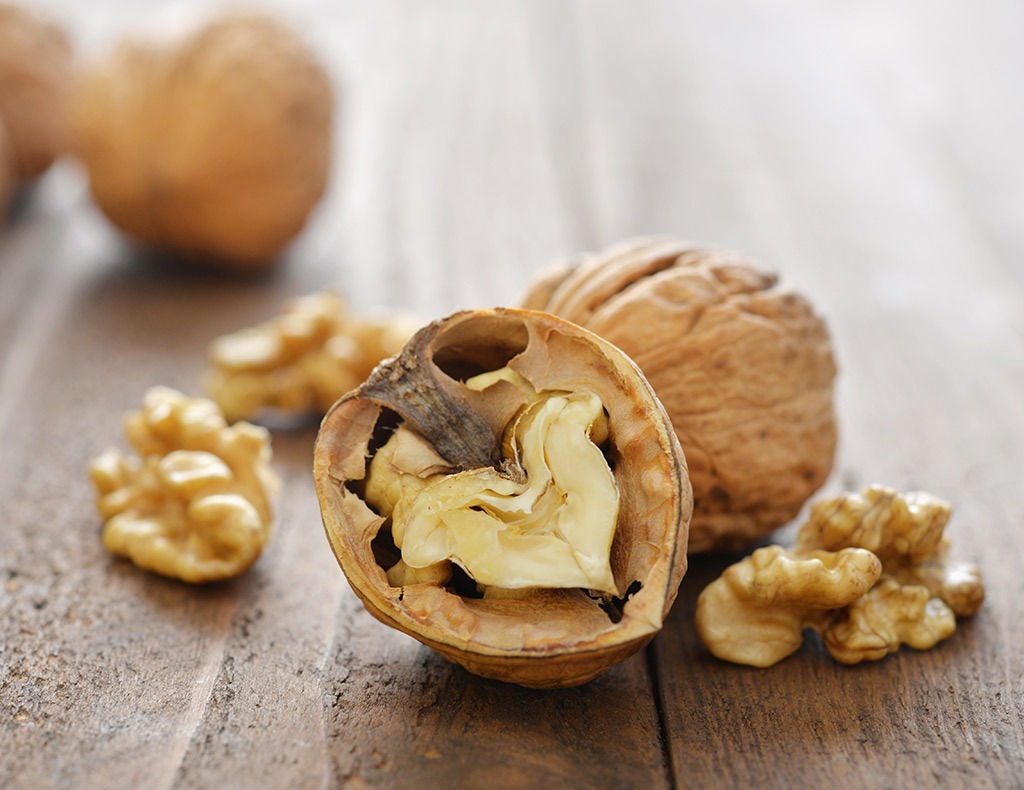
Walnuts are a nutritional double threat: Not only are they one of the best dietary sources of polyunsaturated fats, a type of fat that activates genes that reduce fat storage (see ya, belly fat!), they’ve also been shown to improve brain function in mice with Alzheimer’s disease. Though we can’t be certain the same would hold true in humans, adding the nut to your diet can only benefit your health, so it’s definitely worth a shot. Top your oats and salads with them, or toss some in the food processor and add the mixture to homemade pesto sauces.
BECAUSE THEY WARD OFF OR CONTROL DIABETES…

According to the American Diabetes Association, as we age, our risk for type 2 diabetes increases. Though there’s nothing you can do about getting older, but you can stay active, lose weight and add diabetes-fighting foods to your diet to lower the odds you’ll develop the condition. Already have diabetes? Aside from a list of protective foods, we’ve also gathered dietary suggestions that can improve your condition. Continue on to get in the know.
Guava
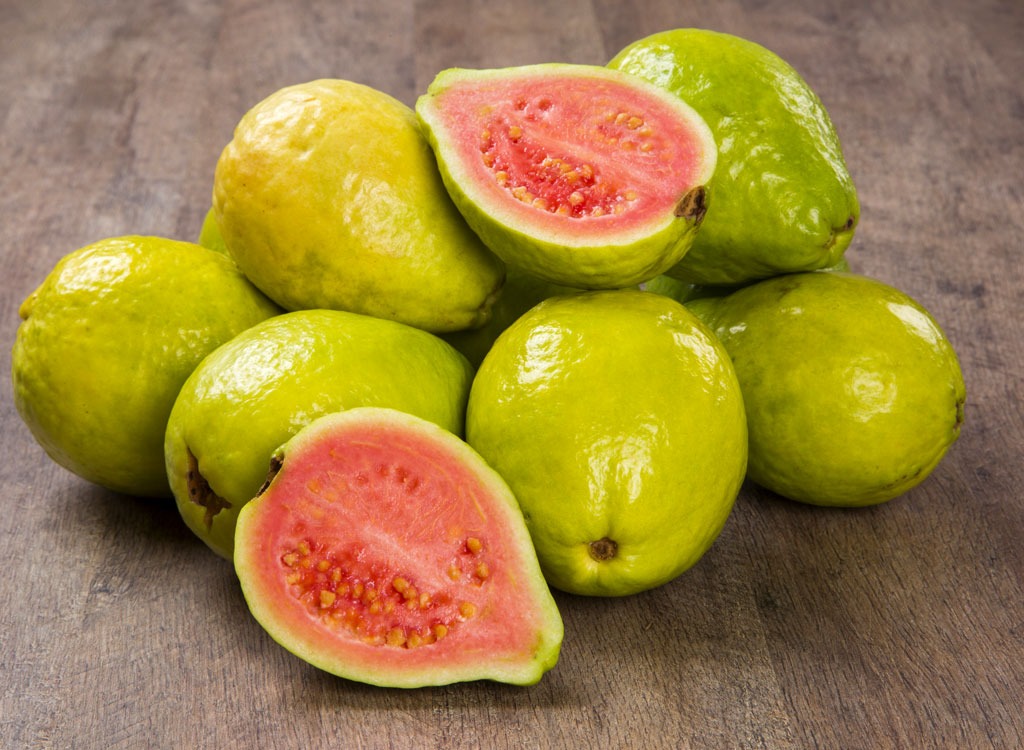
Get this: Studies suggest that those with high levels of vitamin C in their systems may also have the lowest incidence of diabetes. But before you reach for that orange to stay healthy, consider this: Guava provides 600% of the day’s vitamin C in just one cup! A small round orange, on the other hand, packs just 85%. Although the tropical fruit packs 4 grams of protein per cup, Smith suggests pairing guava with an additional source of protein—like nuts or a low-fat cheese stick—to ensure blood sugar levels remain even keel. For more superfoods that can improve your health and help you slim down, check out these 40 Best-Ever Weight Loss Superfoods!
Beans
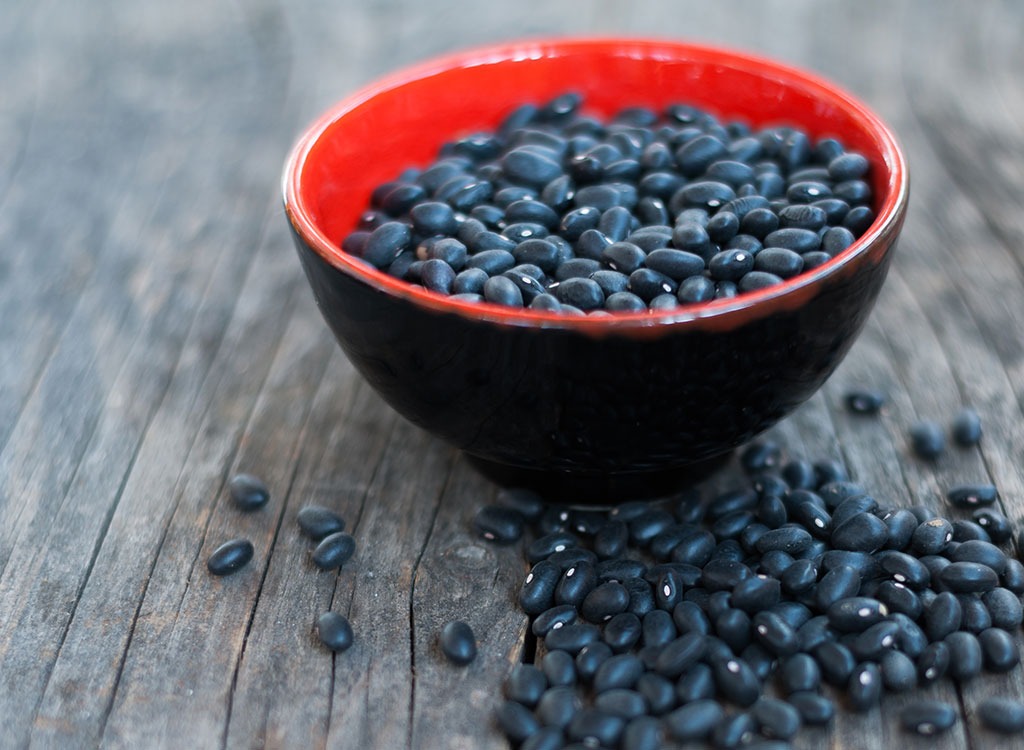
Beans may be the most powerful anti-diabetes medicine in the grocery store. In one study, diabetics who ate a cup of beans every day for three months saw better improvements in their blood sugar levels and body weight than those who ate other sources of fiber. And a longer study that followed 64,000 women for an average of 4.6 years found that a high intake of beans was associated with a 38 percent reduced risk for diabetes. But of all the beans in the grocery store, kidney beans pack the biggest dietary wallop; just a half cup of beans provides 14 grams—more than 3 servings of oatmeal! And it’s not just run-of-the-mill fiber, but a special form called “resistant starch.” This type takes longer to digest than other fibers, making it a very “low glycemic” carbohydrate that helps prevent blood sugar spikes. If you typically buy the canned variety, check the label for additives like sugar and salt and rinse your beans thoroughly before digging in.
Cherries
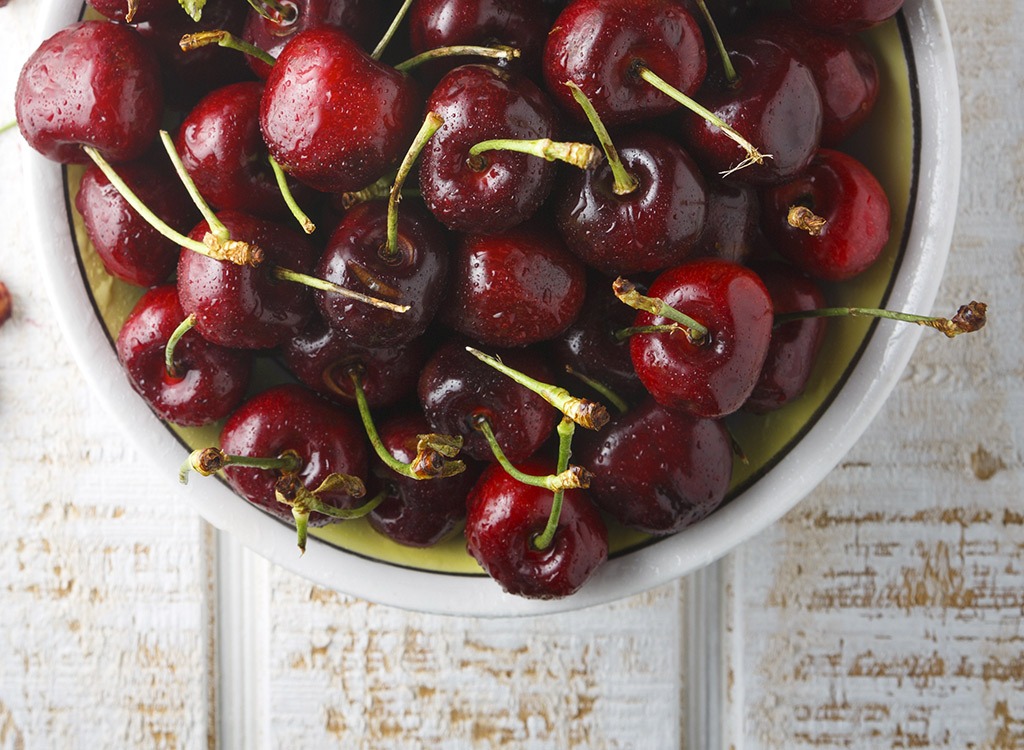
Cherries are packed with anthocyanins, an antioxidant that helps lower blood sugar levels in diabetics. In fact, a Journal of Agricultural and Food Chemistry study found that anthocyanins could reduce insulin production by as much as 50%! And get this: Cherries can also help whittle your middle. They’re so efficient at zapping fat that we’ve named them one of the 30 Best Foods for 6-Pack Abs!
Eggs
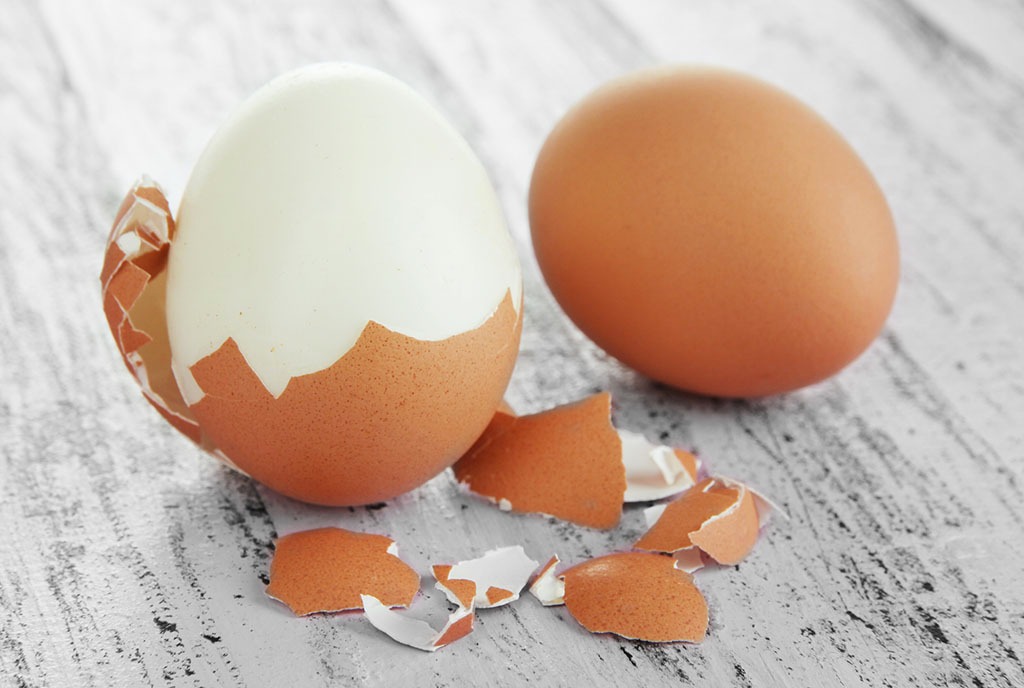
Good news omelet overs, an American Journal of Clinical Nutrition study of 2,332 people found an inverse relationship between eating eggs and low blood sugar levels. Eggs have also been shown to prevent large fluctuations in glucose and insulin levels, according to an International Journal of Obesity report. But that’s not all: The popular breakfast protein is also a potent source of choline, a compound that helps regulate the genes that cause abdominal fat storage. In other words, eating them on the reg can help you lose your love handles and ward off disease. Eggs have tons of other health benefits, too. To crack open the truth check out our exclusive report, 12 Things That Happen to Your Body When You Eat Eggs.
Unprocessed Wheat Bran
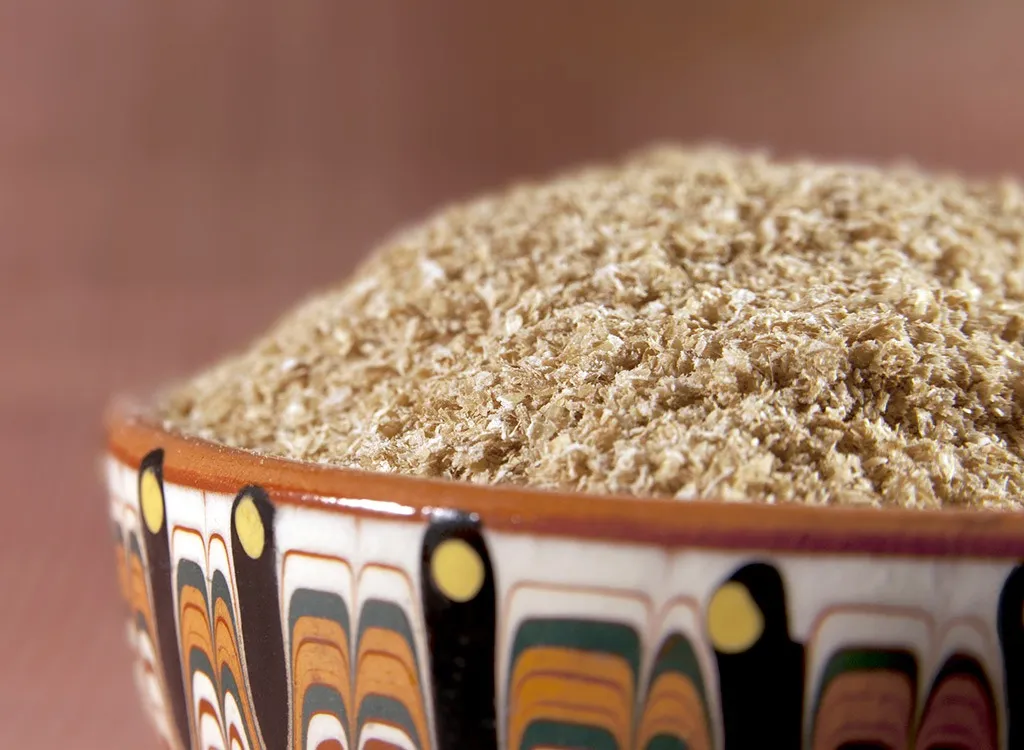
Fiber: The most magical nutrient in the food kingdom. Not only is it super satiating, making it a must-eat for those looking to lose weight, it’s also been shown to decrease the risk of heart disease and help control blood sugar levels, according to the Mayo Clinic. Though everything from vegetables and fruits to nuts and legumes contain the nutrient, wheat bran is one of the most potent sources, carrying a whopping 14 grams per half-cup. Made from the dense, outer hull of wheat grains, this slimming grains can be used to add sweet, nutty flavor to homemade muffins, waffles, pancakes and loaves of bread. It also makes a good addition to hot and cold cereals. If you’re really trying to boost your dietary fiber, consume it solo, porridge-style, with a sprinkling of cinnamon and some fresh berries. For more healthy a.m eats, check out our exclusive report, 15 Healthy Breakfast Ideas: 5 Minutes, 5 Ingredients!.
Sardines
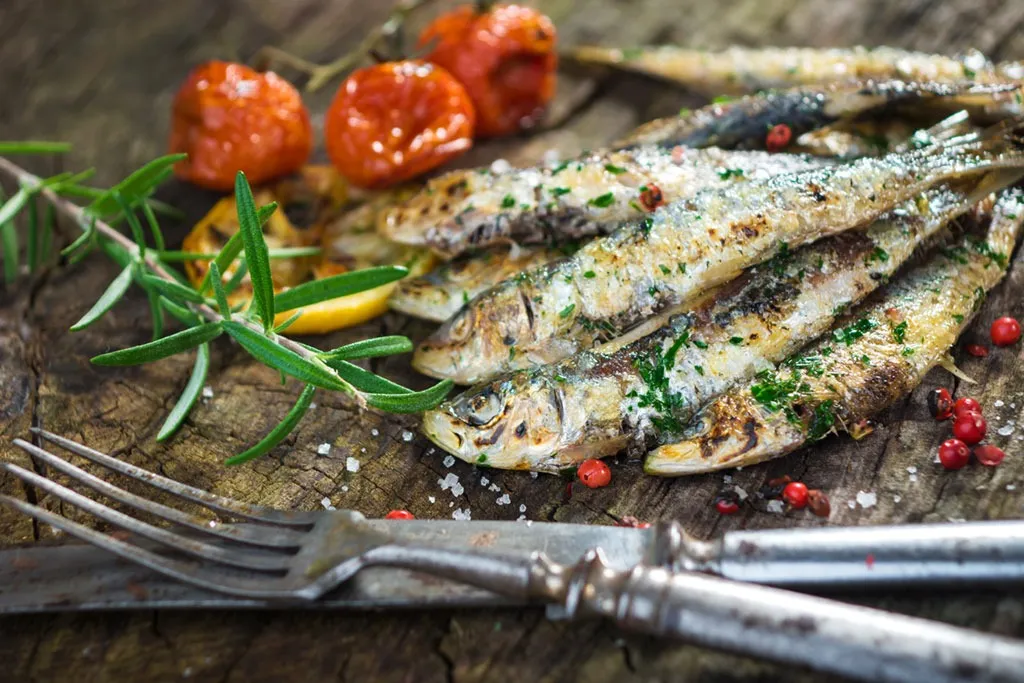
Sardines are a potent source of omega-3s, a nutrient that can improve everything from your cholesterol profile and mood to your ability to ward off Alzheimer’s. In one small study of 148 people who were at risk of diabetes, researchers found that those with a higher ratio of omega-3 to omega-6 in their blood were more likely to improve their blood glucose levels and reduce their diabetes risk than those with a less favorable profile. You can eat sardines from the can, but for a more sophisticated approach, wrap a sardine around an almond-stuffed olive—one of the 7 Foods That Fight “Turkey Neck”.
BECAUSE THEY KEEP INFLAMMATION AWAY…

With each passing birthday, aches and pains become all the more common, usually as a result of inflammation or excess weight. “When you’re heavy or experience weight gain, the additional pounds can stress the joints and causes them to wear down faster. That’s why people who are overweight are also at an increased risk of developing arthritis,” Koszyk tells us. “In addition, fat contains inflammatory chemicals called cytokines, which can promote inflammation and negatively affect different systems of the body, including our joints.” Read on to discover which foods can help ease your inflammatory pain and also be sure to check out these 20 Weight Loss Tricks You Haven’t Tried for even more ways to slim down and soothe your joints.
Turmeric
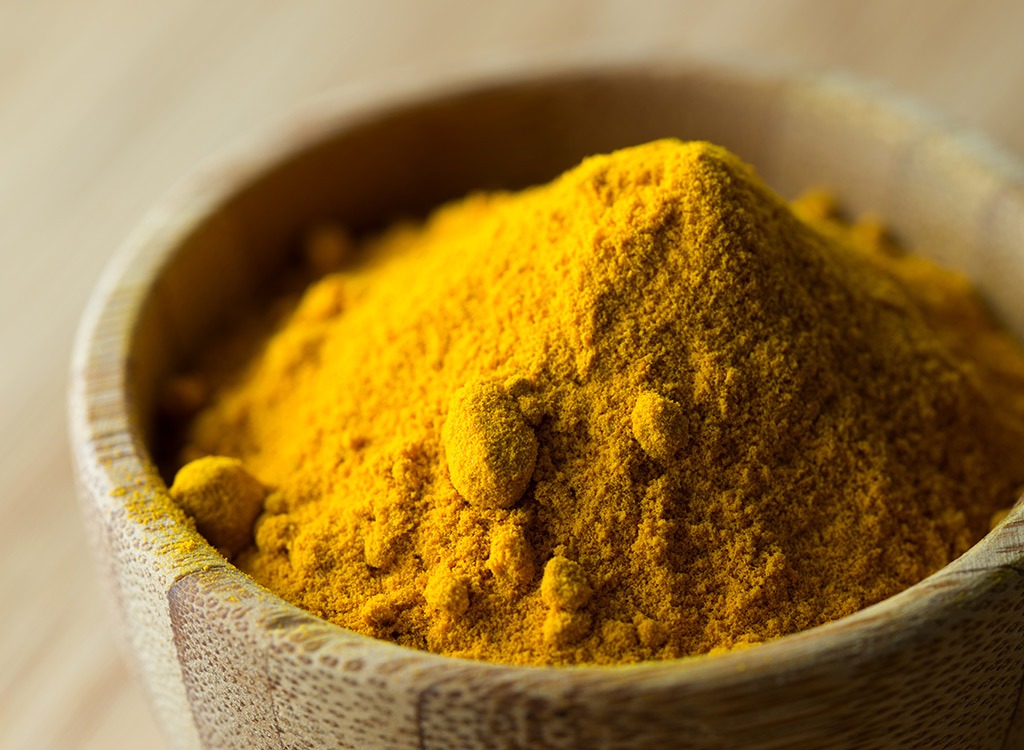
Think of turmeric as Mother Nature’s all-natural ibuprofen. Curcumin, the active ingredient in the Indian spice, blocks the effects of pro-inflammatory enzymes and chemical pain messengers, easing arthritis pain and swelling. Turmeric has also been found to interfere with the growth and spread of cancer cells and lower cholesterol levels. To add the yellow spice to diet, sprinkle it on a tofu scramble, toss it with roasted vegetables or add it your brown rice—the options are truly endless. For even more culinary inspiration—for a whole host of healthy ingredients—check out these 35 Healthy Crock Pot Recipes.
Carrots
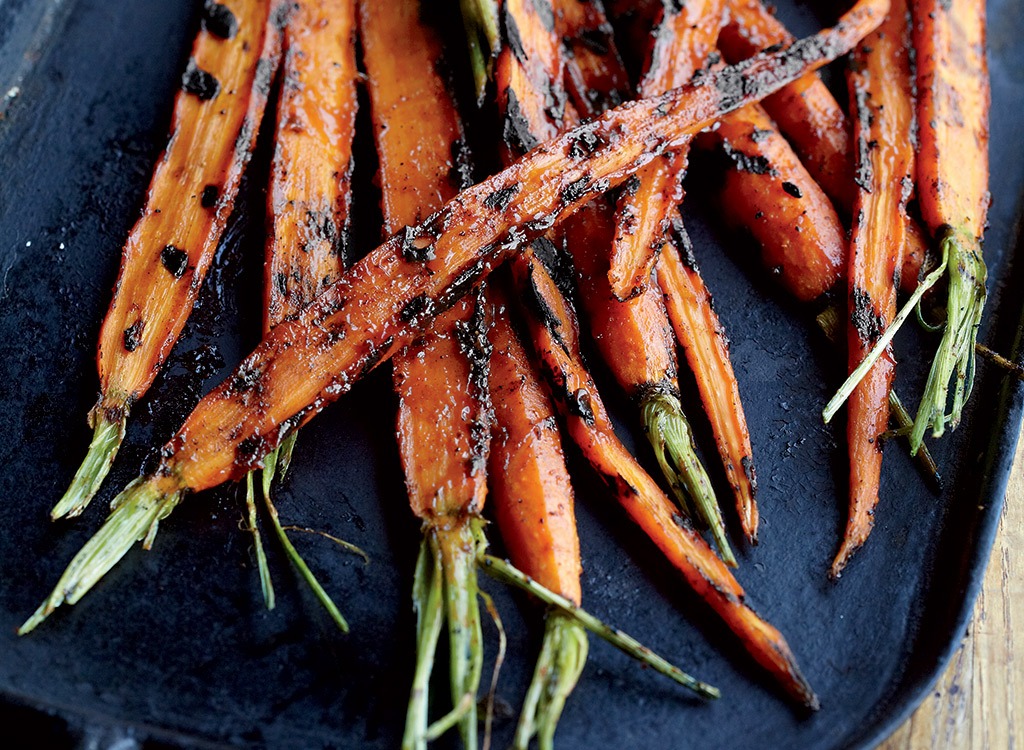
Thanks to their vitamin A and beta-carotene content, orange vegetables like orange peppers and carrots (one of the 50 Best Foods for Your Penis, are strong inflammation fighters. These veggies are also rich in beta-cryptoxanthin, a type of carotenoid pigment, that may ward off inflammation-related conditions like arthritis.
Leafy Greens
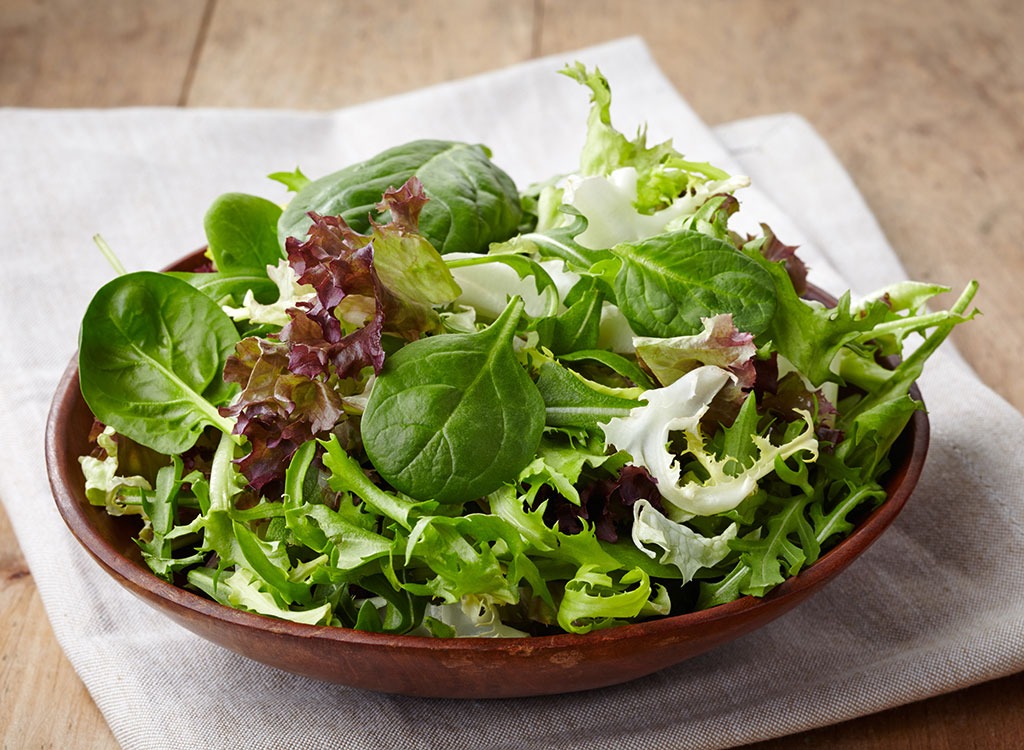
You already knew that nutrient-packed leafy greens like kale, bok choy and spinach should make a regular appearance in your diet, but were you aware that they can help keep you aches and pains at bay? It’s true—and it’s all thanks to their high levels of sulforaphane, a compound that blocks enzymes linked to joint destruction and inflammation. If you’re not already eating them, add these pain-fighting green superfoods to your plate—stat!
BECAUSE THEY’RE GOOD FOR YOUR BLOOD PRESSURE…

You steer clear of the salt shaker and have ditched the sodium-filled processed food from the market but your blood pressure is still high. What gives? “Our blood vessels have receptors that monitor our blood pressure and naturally make changes to help maintain a consistent blood pressure. As we age, however, these receptors become less sensitive so people’s blood pressure can change due to less regulation, explains Koszyk. “In addition, as we age, our arteries become thicker, stiffer and less flexible. Our arteries help pump the blood from the heart, so if the blood flow isn’t as good and the heart has to work harder, blood pressure can increase.” To bring your levels back to normal continue avoiding excess salt and add these six blood pressure-lowering foods to your weekly lineup:
Beets & Beet Greens
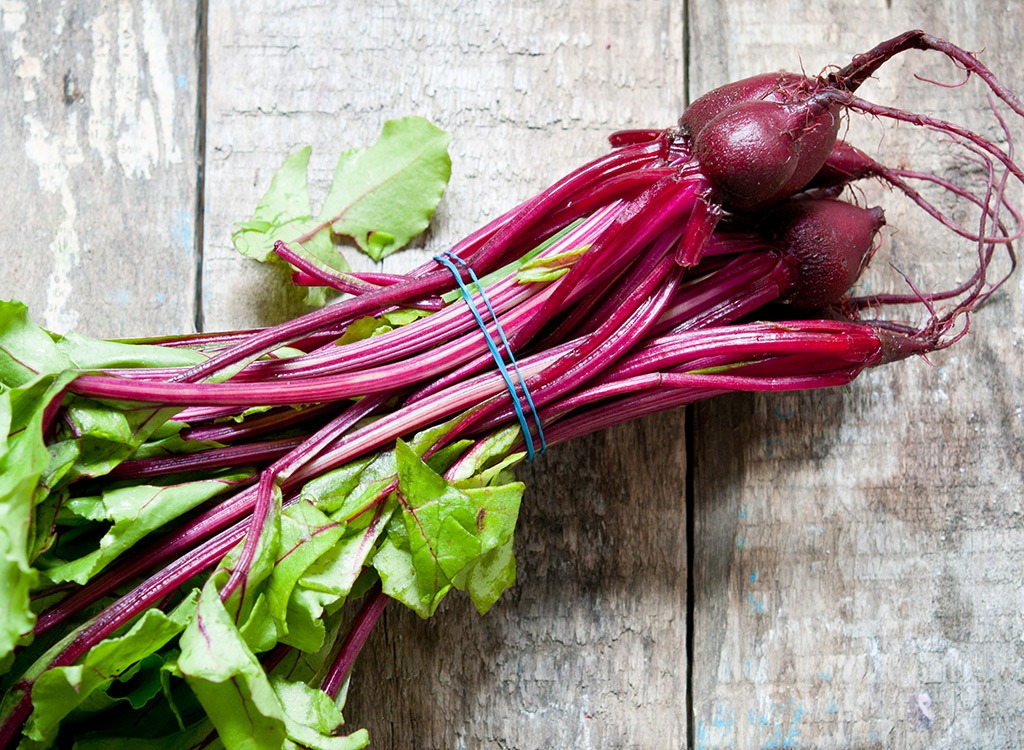
Beets and beet greens are rich in nitrates, a natural chemical that increases endurance, lowers blood pressure and protects the heart by de-stiffening arterial walls, according to the Mayo Clinic. The root veggie also contains 12% of the day’s potassium, a mineral that regulates blood pressure and helps flush out excess salt.
Sweet Potato

Sweet potatoes are packed with potassium, a mineral that can lessen the effects of sodium on blood pressure. They’re also rich in carotenoids, powerful antioxidants which help stabilize blood sugar levels and lower insulin resistance, which prevents calories from being converted into fat. (Woohoo!) Roast them up as a side to grilled meats or fish, or slice and bake them into healthy fries, drizzled with coconut oil.
Dark Chocolate

Good news, chocoholics: The same dark chocolate that makes your taste buds sing can also do wonders for your blood pressure. Cocoa products are rich in flavonoids that can lower BP among those with both hypertension and prehypertension, according to a 2010 BMC Medicine study. Other scientific findings indicate that cocoa’s flavanols can help the body form nitrites, the same chemical in beets and beet greens that widens blood vessels, eases blood flow and blood pressure levels. We like Alter Eco Blackout and Green & Black’s Organic 85% Cacao Bar—they’re both on our list of the best Fat-Burning Chocolates.
Whole Grain Bread
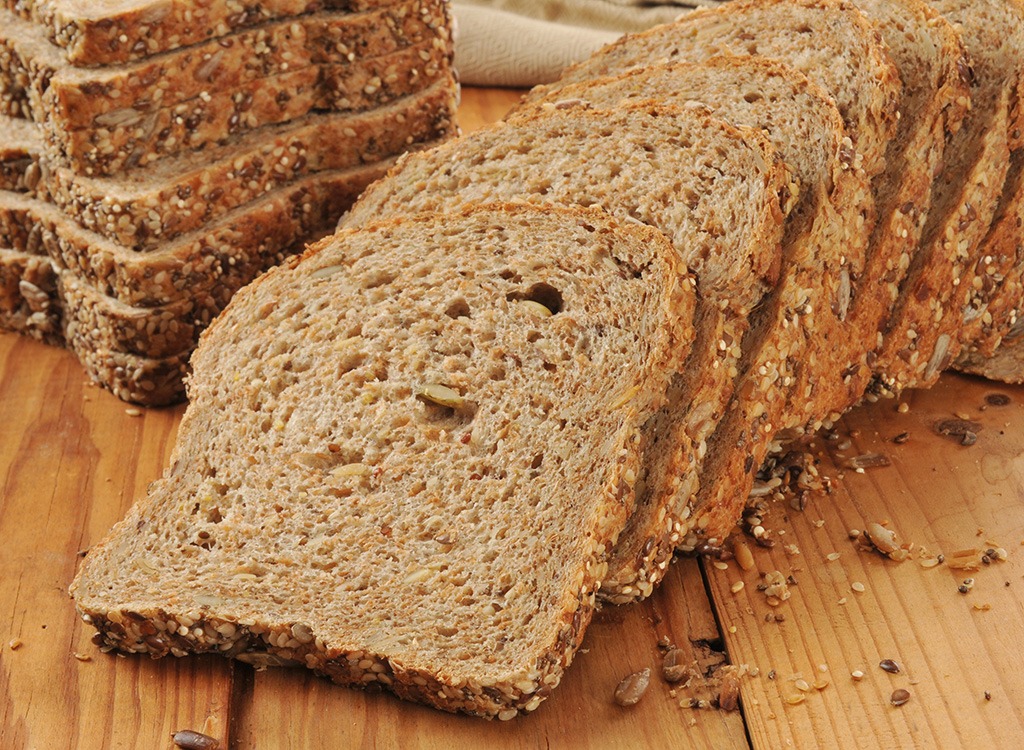
According to a 2010 American Journal of Clinical Nutrition report, eating three servings of whole grains daily was linked with a reduction in systolic blood pressure. Quinoa, amaranth, farro, wheat berries and bulgur are some of Smith’s favorites. We’re also big fans of whole grain bread since it’s super simple to add into any existing diet. Just swap out the white bread you’re toasting up for breakfast and the slices you’re using to make your sandwiches and you’ve hit the three-a-day mark. And speaking of good for you carbs, check out these 25 Best Carbs for Weight Loss.
Pork Tenderloin
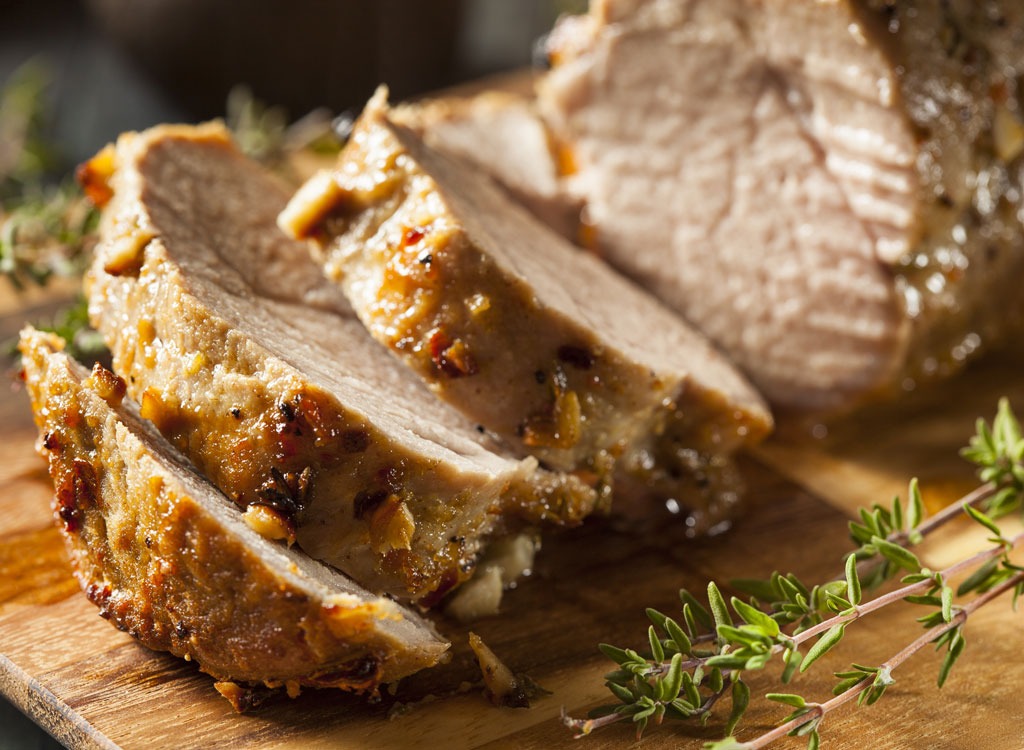
Pork tenderloin, one of the 29 Best Ever Proteins for Weight Loss, serves up more than just protein and fat-incinerating choline. A three-ounce serving also carries 10% of the potassium and 6% of the magnesium you need every day—two of the most potent BP-lowering nutrients around. Cook up a batch of tenderloins in the beginning of the week and keep them on hand so you can easily add them to your weekly meals.

